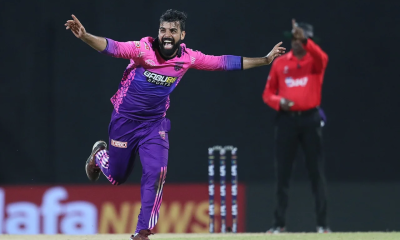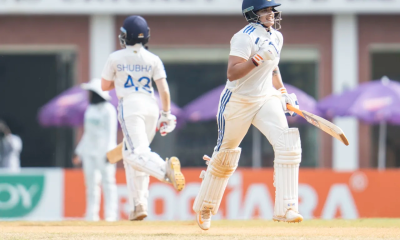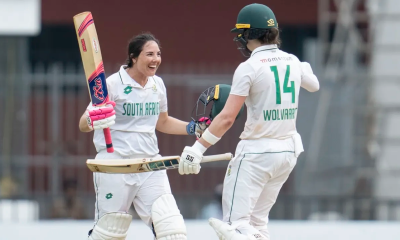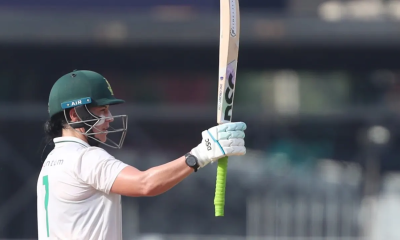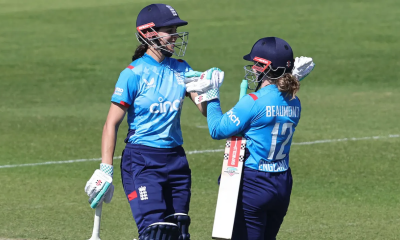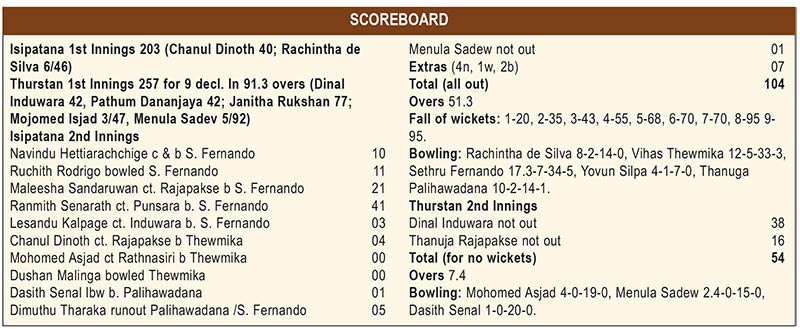Sports
Future is scary and we need to act now
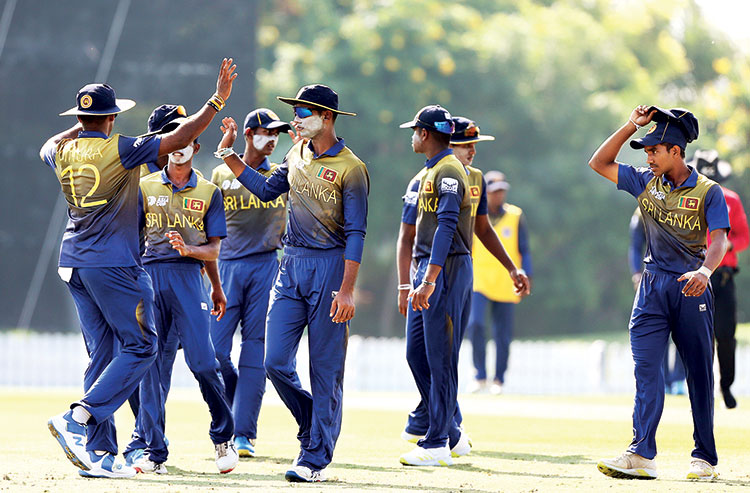
by Rex Clementine
fans had barely recovered from the shock of the national cricket team’s disastrous campaign in the World Cup in India where they had finished ninth, failed to qualify for Champions Trophy and had suffered embarrassing defeats including to Afghanistan and Bangladesh. This week, the Under-19 team did not cover themselves in glory having gone down to UAE and Bangladesh in the Asia Cup.
It’s a pity that Bangladesh had been hiring Sri Lankan coaches for two decades to build their cricket and are producing results, but we are depending on coaches from overseas and are hitting new lows. That Bangladesh has been beating Sri Lanka in age group competitions for quite sometime now is nothing new, but the UAE loss came out of the blues.
It remains to be seen what excuses the pandits running cricket will come up with now for the humiliation in the Under-19 Asia Cup. Their excuses for the World Cup debacle were laughable indeed. When the senior team crashed, they claimed that the fitness levels of the players were below par but conveniently forgot that the system they had put in place had been implemented for well over two years.
As for the governing body, they brushed aside the World Cup flop claiming that cricket did not need urgent remedial measures pointing out at last year’s Asia Cup success. They are of course basking in past glories.
Unless authorities realize that they have issues to address and fix the problem, we are not going to come out of the lean patch.
There are issues that need to be addressed from school cricket where younger teams aren’t encouraged to win. The points system in place is bizarre. The structure in place does not encourage all-round cricketers and that is certainly not keeping pace with the moving trends of world cricket.
Obviously, now that the Under-19 team has crashed, questions will be asked whether players were picked on merit and whether there was any favouritism? You can brush aside these concerns saying that the loss to UAE was one off and the team will be well equipped to face the challenges during the Under-19 World Cup where they are pooled alongside Namibia, Zimbabwe and Australia in Group ‘C’.
The Under-19 team is not alone in failing to set decent totals. The senior team has faced the same problem and collapses are becoming very much part of Sri Lankan cricket culture. That trend needs to change and the only way it can change is by identifying players who will fight it out when the going gets tough.
Too many flashy players throwing their bats around taking risks too early in their innings has cost all Sri Lankan teams in recent years. Batting Coaches have failed to address the issues and find remedies.
The senior side finished as the worst fielding unit spilling as many as 16 catches during the World Cup. It is agreed that there are too many players who have not met fitness standards and their excesses have been excused. The same features haunt the junior team as well and we need to find a way out.
One man handpicked the coaching staff for both the senior and junior teams and the roles of those coaches need to be examined together with the role of the man who recommended them.
Much hype has been made with former captain Sanath Jayasuriya being appointed as the Consultant Coach of the High-Performance Center. While Jayasuriya will be able to identify grey areas and change the culture of players who come under the HPC, the urgent need is to introduce the changes to the senior side for that outfit has failed totally.
You would have expected a bigger role for Sanath. Something like Team Director where he would be able to address key issues and give priority to neglected disciplines like fielding, strategy and playing smart cricket. Your skill levels need not be extraordinary for you to be a good fielding unit. All what needs is the right attitude. Playing smart cricket is not rocket science but Sri Lanka in recent years have come up with some dumb strategies.
There is a new selection panel in place as well and while they are expected to address some key areas their predecessors failed to look into; their selection policy will be interesting to see.
Like in every walk of professional life, in cricket too we will be better off if selected individuals only perform the roles they are entrusted with. One reason why Sri Lanka failed pathetically during the World Cup was because the Consultant Coach was getting involved in selections as well and it proved to be a disaster.
The warning signs were there for the West Indies for many years, but they failed to address burning issues pertaining to their cricket and they have not only faded away but are not competing in global tournaments anymore. Sri Lanka are going on the same path and unless they address the issue urgently they will have to face the music.
Sports
Bowlers’ show as Thurstan cruise to ten wickets win
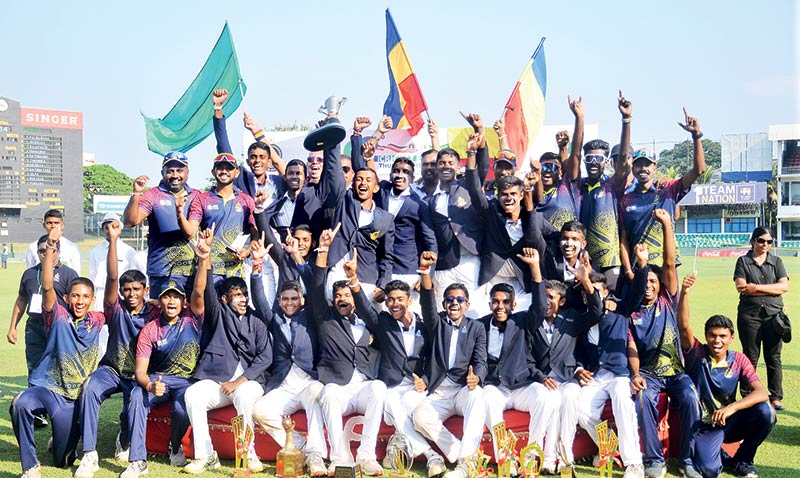
62nd Battle of the Brothers
Rachintha de Silva in the first innings and spinner Sethru Fernando in the second innings produced the much needed special bowling performances to lead Thurstan to massive ten wickets victory over arch rivals Isipatana at the 62nd Battle of the Brothers big match at the SSC ground on Sunday.
The team captained by Thanuga Palihawadana scored their first victory of the series in six years as openers Dunal Induwara and Thanuja Rajapakse kept their wickets intact to reach the target in eight overs.
The two teams could not be separated when they met in the three-day semi-final last week at Sooriyawewa. But at the SSC Rachintha gave them the edge taking six wickets in the first innings to dismiss Isipatana for 203 runs.
In their essay Dinal Induwara (42), Pathum Dananjaya (42) and Janitha Rukshan (77) scored the bulk of runs for Thurstan to post 257 for nine wickets declared.
The third day belonged to spinner Sethru Fernando as he rattled Isipatana top order with a five wicket haul.
Sri Lanka Under 19 skipper Vihas Thewmika took three wickets.
It was Thurstan’s seventh victory in the series as they added the big match victory to their recent success in the Tier ‘B’ tournament.It was the first time the two teams met in a three-day Big Match.
Latest News
Kohli 100* headlines India’s comprehensive win against Pakistan
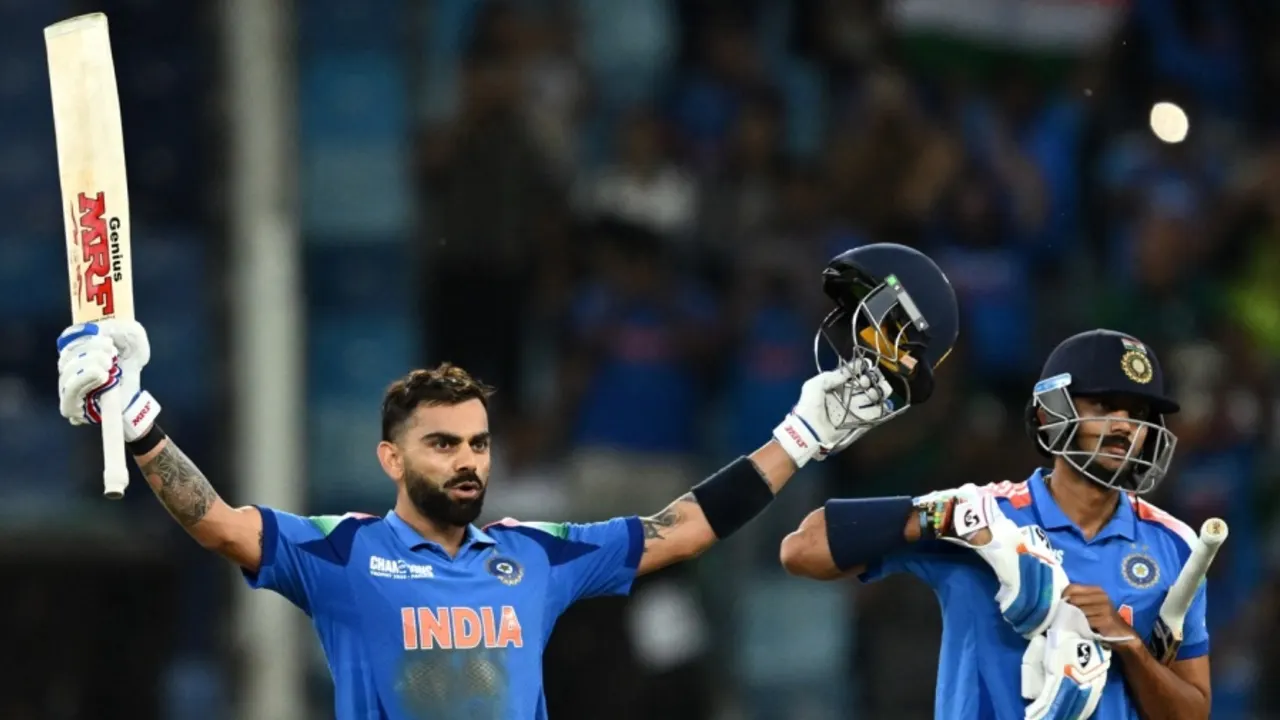
In the biggest match of the year, with his mortality showing more than it ever used to, Virat Kohli proved he’s still got it, that maybe, just maybe, the little he’s lost isn’t going to define him. He ticked off 14,000 runs in ODI cricket, brought up his 51st ODI century, set up India for a semi-final spot and essentially crossed out Pakistan from the 2025 Champions Trophy. The holders and the hosts need other results to go their way to stay alive in the tournament now.
India went into the game as favourites. They were worthy of that seeding, limiting Pakistan to 241 with Hardik Pandya putting in the kind of performance that should make him illegal. An allrounder capable of dismissing the opposition’s best batter, and then coming back to take down their top-scorer, isn’t just a name on the sheet. He is the secret sauce.
And Kuldeep Yadav was the spice. His left-arm wrist-spin is so rare and he made it rarer by finding a way to be quick through the air without compromising on turn or accuracy. So that means unless batters pick him out of the hand, they are always going to be guessing. Three Pakistan batters guessed wrong. All three were end-overs wickets. Pakistan were setting up to explode at the death. Kuldeep just wouldn’t let them. The injury hasn’t affected his menace.
Pakistan were able to produce moments. Shaheen Shah Afridi sending down a 143kph inswinging yorker to shatter Rohit Sharma’s stumps. Abrar Ahmed conjuring a carrom ball from hell to get rid of a rampaging Shubman Gill. But when it came to capitalising on them, they just couldn’t. The result was a world champion side that was renowned for pulling games out of the fire now seems to do the first part right – they definitely got into trouble in Dubai – but the other part, the important part is going so very wrong. Pakistan were 151 for 2 in the 34th over before they were bowled out for 241 with the most inexperienced member of the India side dictating terms, Harshit Rana and his slower balls were just impossible to hit.
A game in an ICC event and a rivalry with history bursting out of it eventually became so one-sided that its last few moments were dominated by an individual pursuit. Axar Patel turned down an easy two so Kohli could pursue his hundred. The crowd in Dubai loved that. There were 12 runs to get for India’s victory and 12 runs to get for their hero’s century and they chanted his name over and over. Pakistan were nowhere to be found. Ever since a collapse of 3 for 11 in 19 balls, this game turned pear-shaped for them.
Mohammad Rizwan had banked on the innings going so differently. He came in at 47 for 2 and hit his first ball for four and then decided run-scoring was not for him. He was 24 off 50. He barely hit the ball in anger. He point blank refused to. At the other end, Saud Shakeel was at least making an effort to turn the good balls he was facing into singles. When he got to fifty, he had weathered only 29 dot balls. At the same time, Rizwan at the other end, had racked up 40. India did well by denying him spin to start his innings. But still, this was a better pitch than the opening game in Dubai a few days ago. It wasn’t flat, but it had a little more pace in it, and it got better under lights. Rizwan, though, batted like it was cursed. He was worried bad things would happen if he tried to hit the ball hard.
And it kinda did. Rizwan fell trying to hit Axar out of the ground and his wicket triggered a collapse. Shakeel fell in the next over and Tayyab Tahir followed soon after. India, having spent 320 deliveries across two matches searching for a wicket in the middle overs, had found three in the space of four. Pakistan were 165 for 5. Soon they would be 200 for 7, having to negotiate the last 7.1 overs of the innings with their tail exposed.
India’s discipline never let Pakistan off the hook and leading the way was Hardik, banging the ball just short of a length on a pitch that was offering a bit of grip and some tennis-ball bounce. He took out Babar Azam at a time when India’s lead fast bowler, Mohammed Shami, was off the field with a shin problem and he did Shakeel for lack of pace just after the left-hander had smacked him for four. He always knew what to do to exploit the conditions and make the batter’s life miserable. On the back of his work, Kuldeep and Rana bowled 6.4 death overs for 28 runs and picked up four wickets.
Gill was the star of India’s chase early on, a conscious effort to keep his front foot from moving too far forward and across leaving him excellently placed to take advantage of Afridi and his full length deliveries when there was no swing on offer. When he rammed the Pakistan fast bowler down the ground and then one-upped it by coming down the track and lifting the ball into the sightscreen, it looked like it was going to be his day. Abrar intervened with a ball that drifted in through the air, tempting the right-hander to close the face of his bat, and turned away to rattle middle and off stump. Gill was stunned.
Kohli, too, offered a shrug of his shoulders. He looked vulnerable against Abrar too and was almost bowled playing back to him. But against the quicks, he was vintage. He went past 14,000 runs with a crisp cover drive off Haris Rauf. All of Pakistan’s best bowlers offer pace on the ball. And that is Kohli’s happy place. A batter of his quality needs to be made uncomfortable at the crease when he is new. He had been dismissed five times in his last six ODIs by legspin. Pakistan had one of those and they felt they couldn’t go to him.
Shreyas Iyer helped himself to a half-century. A little change in his technique where he holds his bat higher and waves it as the bowler approaches, creating momentum into his shots, is helping him deal with an earlier weakness against the short ball. He clubbed Rauf for four in front of square to prove it. But there was no taking the spotlight from his senior partner.
Kohli was setting the tempo. Pakistan had allowed to do so. Though he only hit three of his first 62 balls to the boundary, he already had fifty runs to his name. He knows how to score quickly without looking for big shots. The ball wasn’t stopping on the surface as much under lights. Things were working in his favour again. He almost knew he was going to get a hundred. He demanded an explanation when Axar turned down a second run off a wide in the 42nd over when it was clear to everybody else that all he was doing was make sure Kohli had the best chance to get to three-figures with time running out. When he did, off the last ball of the match, Kohli looked to the dressing room and literally said “I told you. Relax”. That was how easy this was. That was how inevitable he was.
Brief scores:
India 244 for 4 in 42.3 overs (Rohit Sharma 20, Shubnam Gill 46, Virat Kohli 100*, Shreyas Iyer 56; Shaheen Shah Afridi 2-74) beat Pakistan 241 all out in 49.4 overs (Saud Shakeel 62, Babar Azam23, Mohammad Rizwan 46, Khushdil Shah 38; Hardik Pandya 2-31, Kuldeep Yadav 3-40)by six wickets
[Cricinfo]
Sports
Air Force Rugby on the path to its glorious past
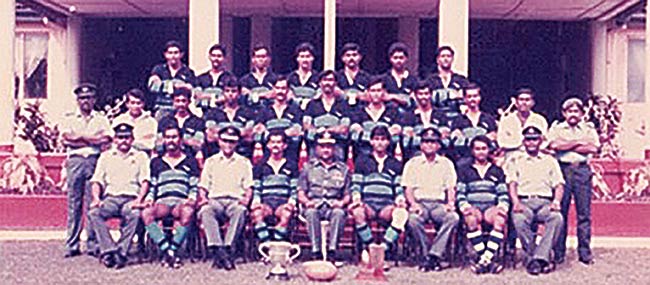
From its humble beginnings in 1955 as the Royal Ceylon Air Force (RCyAF) Rugby team, Sri Lanka Air Force (SLAF) can be proud of its achievements in the field of Rugby in the country. Over the years SLAF has produced some top Rugby players in the caliber of Harry Goonetilleke, Jeff Ratnam, Charles Wijewardena, Viper Gunaratne, Ronald Rodrigo, Mohan Balasuriya, Tikiri Marambe, Nalin De Silva, Chandana Deepthi, Rex Anthony and Charith Seneviratne to name a few.
In 1956, RCyAF participated for the first time in the Inter Service Rugby Championship. The team lost to Navy (0 -3), however, beat the Army 14 -11. RCyAF won the Inter Services Rugby Tournament for the first time in 1957. 1965 was considered a memorable year for RCyAF Rugger as they won the “B” Division Rugby League and qualified to play in the “A” Division Rugby in 1966. Besides, they reached the finals of the Clifford Cup for the first time. The Clifford Cup final was played on 15 August 1965 at Langdon Place. RCyAF team lost to CR & FC 0 -11 and became the runners up.
In 1975 SLAF Rugby team created history, when they won both A’ Division and ‘B’ Division Rugby League Championships and becoming the first team to achieve this milestone. During the season, SLAF led by Squadron Leader Shanthi U. Mendis, were victorious in 12 out of 16 games. In the knockouts they entered the Clifford Cup final by beating Kandy SC led by Iswan Omar in the semis, in extra time. In the finals, SLAF lost to Army SC in a close match 3-4. Tissa Nanayakkara scored the solitary penalty for SLAF and for Army, it was Amaradasa who scored the winning try. Unfortunately for the Air Force, Nanayakkara missed a 35-meter penalty in front of the post with two minutes to the full time. Squadron Leader Tony Dirckze was the Command Rugby Officer whilst Squadron Leader Eddie Buell coached this champion outfit.
The finest moment of SLAF Rugby was the winning of Clifford Cup in 1986 under Corporal Lakshman Caldera beating a star-studded Police SC 10 -8. In the Quarter Finals, SLAF beat Navy SC 44 to10 and beat CH & FC 8-4 in the semi-final. A try in the extra time by Flying Officer Harsha Fernando helped Air Force SC to beat CH & FC after the scores stood at 4-all at full time. Air Force SC confronted the mighty Policemen in the final on 16 August 1986 and scored a sensational 10-8 win to clinch club rugby’s richest prize – the Clifford Cup. Second row forward Corporal Lofty Perera (jnr) scored the solitary try for the Airmen, while Corporal Tony Wimalasuriya fired across two penalties. Air Vice Marshal Brendon Sosa was the Chairman of SLAF Rugby at this historic occasion and the team was coached by late Air Vice Marshal Channa Gunaratne.
After a considerable period of mediocre performance, SLAF bounced back to reckoning when they reached the finals of Clifford Cup Rugby Tournament in 2019, after a lapse of 33 years. In the semi-finals SLAF beat Police SC 32 to 23. On 24 March 2019 they met Havelocks SC at the Cup Finals under flood lights at the Race Course ground Colombo. SLAF went down gallantly 21 to 40. During the on-going 2024 /25 Rugby season, SLAF Rugby team has performed excellently thus qualified for the Super Round after a lapse of 13 years. The team is led by Rumesh Wasantha will try to give their best at the Super Round as well. Former Thurstan College and Air Force Flanker, Air Commodore Subash Jayathilake is the Chairman SLAF Rugby and the incumbent Commander of the Air Force Air Marshal Bandu Edirisinghe has given a tremendous leadership to this young outfit.
Air Vice Marshal
Padman De Costa Former Secretary Air Force Sports Council and Secretary Defence Services Sports Board
-

 News5 days ago
News5 days agoCommercial High Court orders AASSL to pay Rs 176 mn for unilateral termination of contract
-
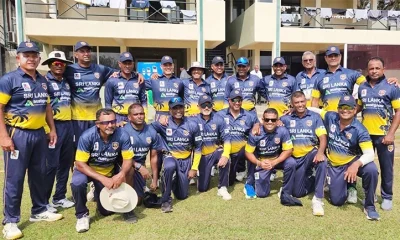
 Sports4 days ago
Sports4 days agoSri Lanka face Australia in Masters World Cup semi-final today
-

 Features6 days ago
Features6 days agoUSAID and NGOS under siege
-

 Features6 days ago
Features6 days agoDoing it in the Philippines…
-

 Midweek Review5 days ago
Midweek Review5 days agoImpact of US policy shift on Sri Lanka
-

 News4 days ago
News4 days agoCourtroom shooting: Police admit serious security lapses
-

 Business6 days ago
Business6 days agoDialog delivers strong FY 2024 performance with 10% Core Revenue Growth
-
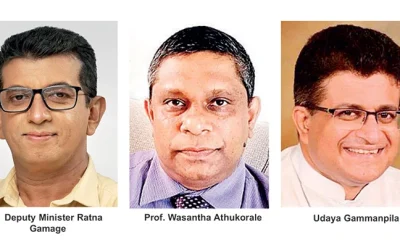
 Business5 days ago
Business5 days agoBudget 2025: A spectrum of reactions and perspectives




